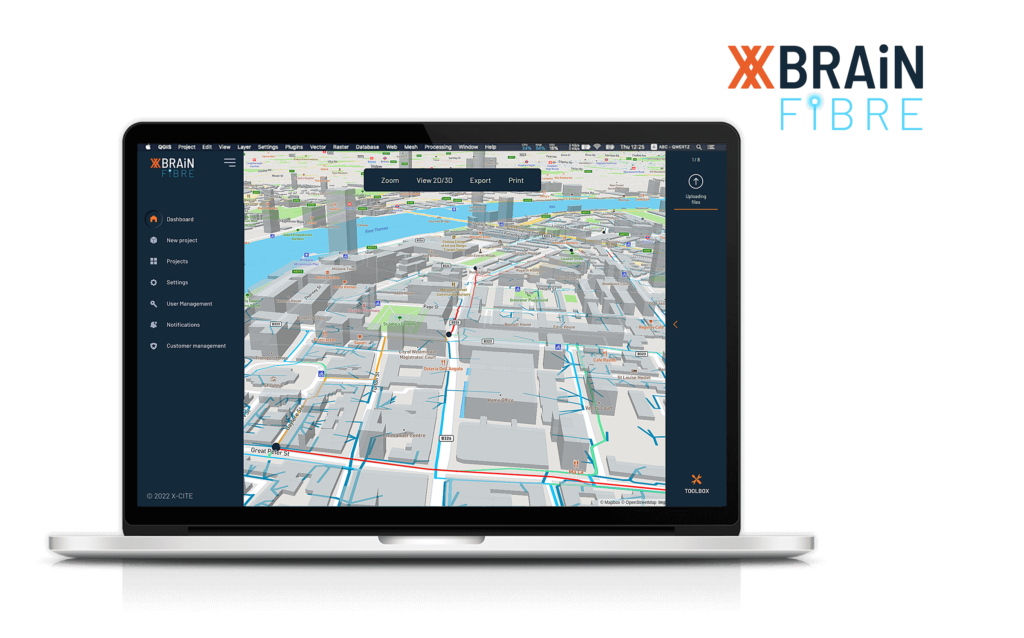Optimisation Constraints
X-BRAiN for network planning allows to add constraints to the applied algorithm. This includes the assignment of specific nodes for dedicated tasks, e.g. splitters. Other types of constraints are the minimum/maximum length of cables, the minimum/maximum number of splitters, specific routing strategies and associated topology constraints and more.
Network Planning Outputs
The final network plans that are generated by the internal X-BRAiN algorithms include the complete set of all required output parameters. This features the placement of specific nodes like first/second stage splitters, aggregation nodes, cable routes and more. The final output also includes a complete bill of material (BoM), the applied KPIs and an overall cost estimation.
Applicable KPIs
The AI and ML algorithms that are used for the network planning process are able to follow a specific set of KPIs that can be defined. This includes the number of residential or business addresses that are covered, the total metres of used cable or other KPIs that are relevant for the business of the specific ISP.
Forecasting
In addition to the basic network planning task, X-BRAiN is able to forecast the material and human resource demand in order to initiate a dedicated planning. In this context, X-BRAiN is ready to integrate with business internal job orchestration systems in order to provide timelines, scheduling proposals and the required bill of material (BoM).
Tuning of initial Output
The generated network plans can be forwarded to be used in surveying tasks. Potential issues that have been detected on the field can be adjusted a-posteriori by the surveyor and a re-calculation of the network plan can be triggered by X-BRAiN at any time. This includes potential geographical optimisations like the usage of streets with lower build costs or locations where build jobs can be performed more conveniently.
Data Validation & Cleansing
Depending on the available data that is used by X-BRAiN for performing the network planning process, data validation and cleansing will be applied to highlight and/or correct incorrect data before using it as an input for internal algorithms. Potential applicable services for importing and exporting data, e.g. integration to geo servers including an evaluation, styling or enriching of data can be applied.
Input Parameters
The Ai and ML based network planning algorithms are considering multiple types of input parameters. This includes geographical data like the existing infrastructure in the form of ducts, poles, cabinets or OLTs, next to the connectivity demand like addresses, buildings or P2P connections. Moreover, additional parameters like material requirements, e.g. splitting ratios, or resilience requirements are considered.
















